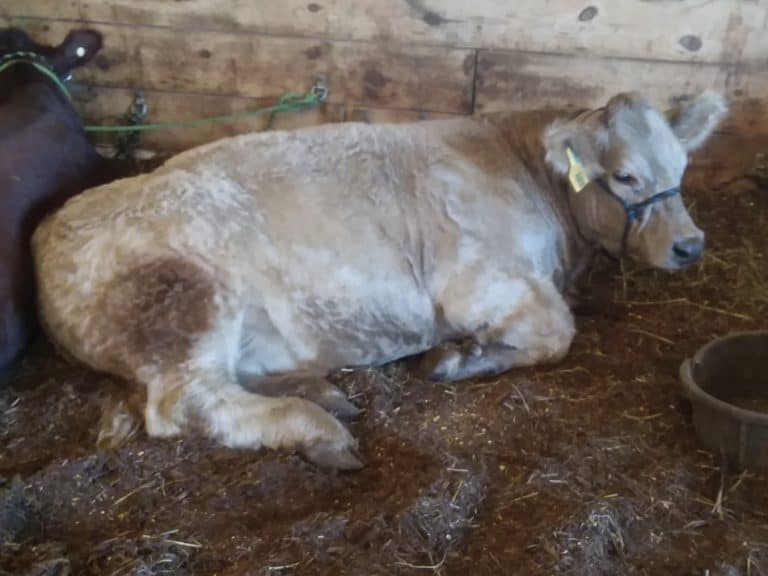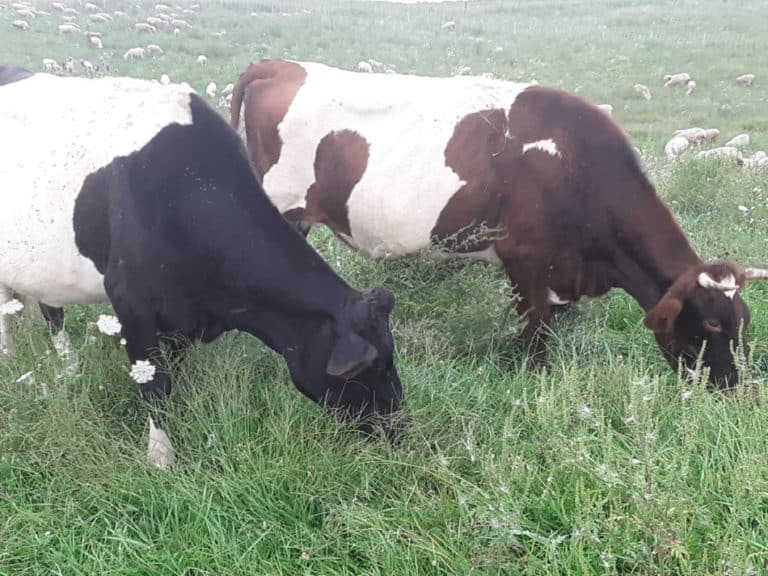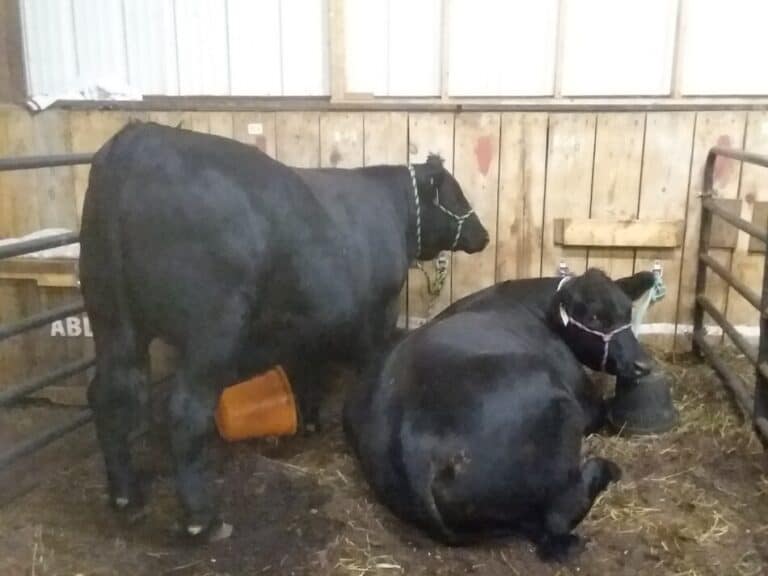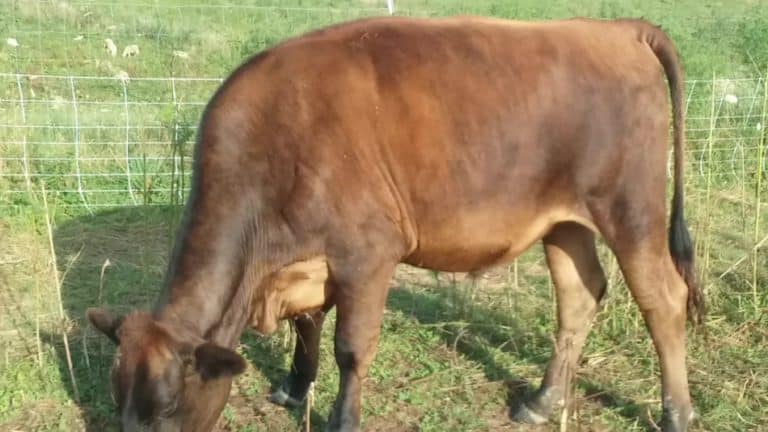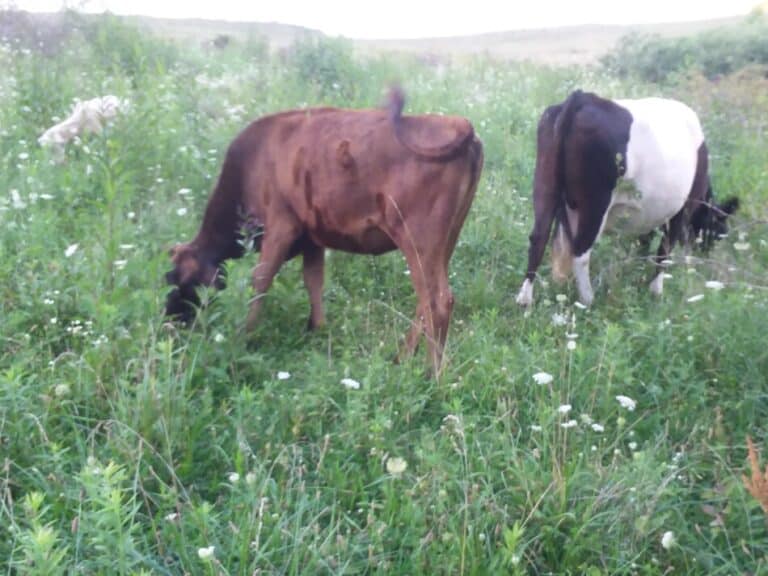Beef Cattle And Manure: Amount To Expect And What To Do With It!

When you’ve got cattle, you’re going to have manure! How much will each cow produce and what are you planning on doing with it?
A 1,000 pound cow will produce 60 pounds of manure per day. Manure in the barn should be captured in bedding, like straw or sawdust and then composted.
You have a huge opportunity in front of you, keep the fertility your cows are giving you or loose it. It’s all in what you choose to do with your manure management.
The great news is that keeping all the “good stuff” in manure is pretty easy, it just takes a little common sense.
Manure has huge potential benefits, if handled well. Notice the “if” part, meaning it also has potential downsides if poorly handled.
If you would like less manure to deal with, consider reading Using Grass To Feed Your Herd.
Whether you choose to harness this power, or let it slip away from you is all in how you handle the amount of manure your cows produce.
We’re going to dig into how you can figure out how much manure to expect from your cattle and how much bedding you’ll need to have on hand to be capture all of that nutrition for your farm.
If you are looking for more details on getting into beef cattle, start with my article Beef Cattle: Beginners Guide To Feed Costs.
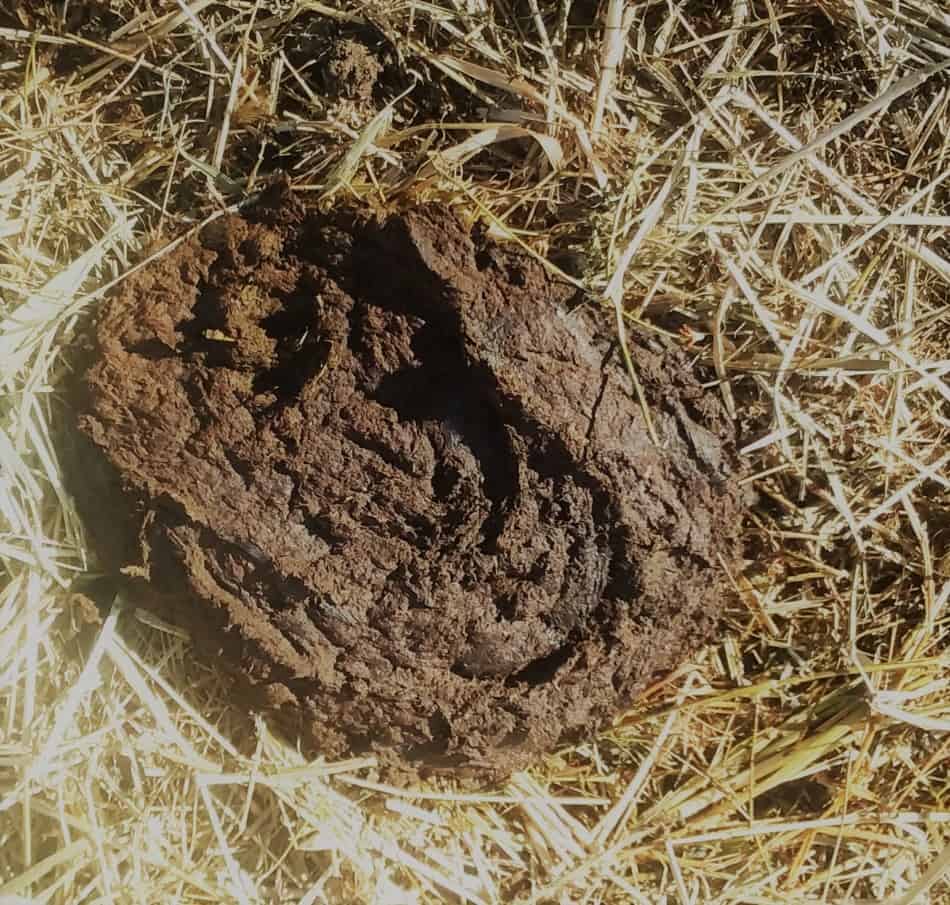
Expect 60 pounds of manure per cow
You can expect your cows to produce 60 pounds of manure each per day. Click here for the USDA article and table.
It actually lists 59.1 pounds of manure per 1,000 pound animal unit, I rounded up for easier math!
Before we go into what to do with your herd’s manure let’s figure out this animal unit thing. It’s really not complicated.
It’s an attempt to more accurately compare the manure production between different species of farm animals.
An animal unit is 1,000 pounds of any animal. This helps to even out in your mind the manure production from each type of animal if everything were measured by the same amount of body weight producing the manure.
Here are some interesting examples: per animal unit beef cattle produce a bit less manure than pigs, and significantly less than broilers (meat chickens).
Since most beef cattle will be larger than 1,000 pounds, you’ll have to do a bit of math to get the exacts on what your gals are most likely producing.
Let’s work out an example with a 1,200 pound cow. Per 1,000 pounds she is producing 60 pounds of manure, but she weighs a bit more than 1,000 so we need to do a bit of math.
60 pounds of manure divided by 1,000 pounds of cow=0.06 pounds of manure per pound of cow body weight
0.06 x 1,200 pounds = 72 pounds of manure per cow per day for your herd
This 0.06 can also be applied to any size beef cattle, for instance 450 pound feeders or 800 pound heifers.
Now let’s step back a second and get real here, who is weighing out the poo from their cows? Hopefully, no one!
Then why are we going over all this? To give you an idea of the amount of manure you are likely to need to manage.
Cattle manure should be on pasture or composted
The simple answer here is have the cattle outside so the manure is going on the pasture.
While that may sound like an obvious answer, it seems to be frequently overlooked. Nature is designed to take cattle manure that is put on the grass and convert it into more grass.
Anytime when your pastures can support the cattle, have those cows outside! Every pile of poo on the grass is one less pile you need to cover with bedding!
Manure handling for inside cattle
When your cattle are inside for the winter, you have two options for manure management.
You can use plenty of bedding and keep the manure in the barn for the season or use minimal bedding and clean out the manure out frequently.
Repeated clean out method for cattle manure
Repeatedly cleaning out the barn through the winter takes a lot of tractor time and cooperative weather to make happen.
Frequent clean outs are also required to keep the cattle clean. You are substituting tractor work for bedding.
Be aware, this way of taking care of your herd can get out of control fast!
Your gals are still making the 60 pound of manure per day whether you are keeping up with the tractor work or not.
Deep bedding/composting method for cattle manure
By far the easiest way to deal with manure inside the barn is to use plenty of bedding. It really is that easy!
You are making a big diaper out of straw, or whatever your bedding of choice is, and trying to trap every last little bit of manure in that carbon source!
Keep adding bedding as needed. Once the cows no longer need to be in the barn, you have the opportunity to begin the composting process.
Let the composting begin!
You can move the manure outside to a pile or work with it inside if you don’t need the barn space for anything else.
If you turn the manure a few times, it will heat after the mixing then cool again. When you can’t smell manure or it doesn’t heat up any more when you turn it, it’s done.
If you want to leave the pile alone, it may compost down on it’s own, it will just take longer.
Keep an eye on the pile and when you see heat, you’ll know those composting bacteria are working. If you don’t see any heat, then you are not getting the composting action you need.
Not seeing any composting action?
First, I should mention, the compost may be working and you are not seeing the steam, especially if it is humid in your area.
Get your pitchfork and start poking around a bit in the pile. Is it warm in there? Heat means bacterial action is happening.
The next thing to consider is time and the weather. The bacteria need a bit of time to get going in that pile. It will be a few days until you get some action.
The other thing is weather. In cold weather the pile will take longer to get going simply because the bacteria work best in a warmer environment. Composting works in the colder weather, it will just take longer.
Here’s the fix: turn/mix the pile
Try turning the pile. If you notice there is way more manure in the pile than straw, you don’t have the ratio of carbon to manure right. Add more straw.
I’m sure it’s possible to have too much straw and have the carbon ratio off in the other direction, but it’s much less likely.
If you want to “hire out” your composting work, pigs will work the bedding for you.
Smaller pigs, like feeder pig size will root around, but to get the real bedding turning going you’ll need larger pigs, more in the 200 pound range.
Determine how much straw you need
We’ll get into the math of exactly how to figure this out for your cows as soon as I mention this: use your common sense.
The math that’s up next will give you a good idea of how to estimate what you’ll need for your cattle.
Really though, all you need to do is add bedding before you smell a manure or ammonia odor. It’s that easy.
Still not sure if you’re doing it right? Put one knee down in the pen. How does your pant leg look?
If you’ve got enough bedding down, your pants will be the same as they were before. If you’ve got a wet knee, your cows need more bedding. Simple.
On to the math of bedding for the herd
Here is a great resource for you to check out NDSU Composting Animal Manures. Wow, is this a super article!
I used the NDSU table to calculate out the straw needed for composting cow manure. It works out to be 90.52% manure and 9.48% straw to make a good compost pile.
At 60 pounds of manure per day and 120 days inside per year (4 months) that’s 7,200 pounds of manure per cow per winter.
This means you’ll also need 682.56 pounds of straw per cow for that time period.
Here’s the math: 7,200 pound of manure -90.52%=682.56 pounds of straw
682.56 pounds straw is about 1/3 of a ton of straw per cow per winter.
| Number of cows at 1,000 pounds each | Tons of straw needed for 120 days |
| 1 cow | .34 tons |
| 5 cows | 1.7 tons |
| 10 cows | 3.4 tons |
Remember a few important things when calculating out your bedding needs.
- The type of bedding matters. For example: using sawdust instead of straw will make the pounds of bedding material needed per cow go down significantly.
- These numbers are based off of a 1,000 pound cow, the classic animal unit. If your cattle are larger or smaller, you’ll need to adjust the numbers a bit. The easiest way to do this is add up the total weight of your herd and divide that weight by 1,000 giving you animal units in your herd.
- My estimate of 1/3 tons of straw per cow is also dependent upon the 4 month time period. If your winter is longer or shorter, you’ll need to adjust accordingly.
Consider where you get your info
If you have been looking around for information on how to “deal with” manure, you are probably coming across manure being viewed as a problem.
Please stop reading these sources of information! I’m not questioning the accuracy of their figures, I’m concerned about the negative attitude towards manure.
The manure from your herd is a resource, not a problem.
Manure is a huge fertility source and soil rejuvenator! Provided that you do a few things to make sure you keep the nutrients stable.
Of course, if you mismanage the manure it can lead to problems for you or your farm.
The manure is the same in either case.
It is the attitude towards and the management of that manure that determines if it is a resource or a headache. I choose to view manure as a resource, how about you?
Know your area manure restrictions
This is where things can get a bit dicey. Your area may have very specific restrictions on manure handling.
As far as I am aware, there are no restrictions on composting manure.
If you choose to pile the manure outside, without the proper amount of bedding, you are likely to run across some problems with your manure management not being in line with what the powers that be want you to be doing.
This is because you are loosing nutrients with the manure being unprotected by not using enough bedding.
